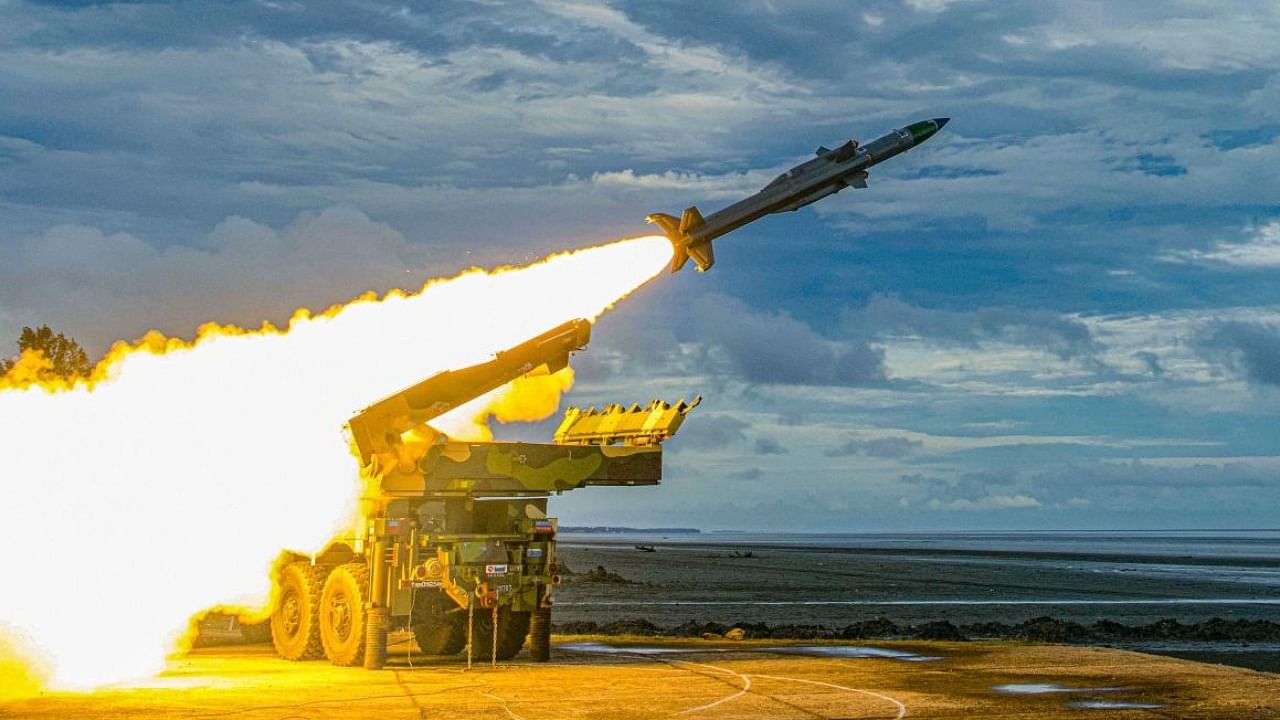
With an estimated 164 nuclear weapons, India’s nuclear stockpile is comparable to Pakistan’s but significantly less than China’s, which seeks to match its Intercontinental Ballistic Missile (ICBM) numbers with that of the USA or Russia by the turn of the decade, according to the latest report from Stockholm International Peace Research Institute released on Monday.
As of January 2023, India was estimated to have a growing stockpile of 164 nuclear weapons, a small increase from the previous year’s count of 160.
These weapons are assigned to a nuclear triad of aircraft, land-based missiles and nuclear-powered ballistic missile submarines.
Pakistan, on the other hand, had 164 such weapons in 2022 but seeks to increase the stockpile by adding another five with the existing stocks.
China is way ahead of India and Pakistan with the communist country having an estimated 350 nuclear weapons last year with Beijing planning to expand its stockpile with 410 such weapons by the end of 2023.
Depending on how it decides to structure its forces, China could potentially have at least as many intercontinental ballistic missiles as either the USA or Russia by the turn of the decade.
India and Pakistan appear to be expanding their nuclear arsenal, and both countries introduced and continued to develop new types of nuclear delivery systems in 2022. While Pakistan remains the main focus of India’s nuclear deterrent, India appears to be placing growing emphasis on longer-range weapons, including those capable of reaching targets across China.
The Indian estimate is based on calculations of India’s inventory of weapon’s grade plutonium, the estimated number of operational nuclear-capable delivery systems, India’s nuclear doctrine, publicly available information on the Indian nuclear arsenal, and private conversations with defence officials. The Pakistani estimate comes with a higher degree of uncertainty.
While India has adhered to a nuclear no-first-use policy since 1999, this pledge was qualified by a 2003 caveat (reaffirmed in 2018) that India could also use nuclear forces to retaliate against attacks by non-nuclear weapons of mass destruction.
Also Read | Arming the world and aiming high
Since a part of India’s nuclear arsenal is being kept at a much higher state of readiness, there are speculations and theories among the strategic community on whether India is transitioning towards a counterforce nuclear posture to target an adversary’s nuclear weapons earlier in a crisis scenario even before they could be used. However, there is no official word.
Of the total global inventory of an estimated 12 512 warheads in January 2023, about 9,576 were in military stockpiles for potential use, 86 more than in January 2022. Of those, an estimated 3,844 warheads were deployed with missiles and aircraft, and around 2,000, nearly all of which belonged to Russia or the USA, were kept in a state of high operational alert, meaning that they were fitted to missiles or held at airbases hosting nuclear bombers.
Russia and the USA together possess almost 90% of all nuclear weapons. The sizes of their respective nuclear arsenal (usable warheads) seem to have remained relatively stable in 2022, although transparency regarding nuclear forces declined in both countries in the wake of Russia’s invasion of Ukraine in February 2022.
